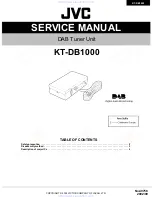
High/Low Impedance Toggle:
You can manually set your Z-11Pro for Hi-Z or Lo-Z antennas. Press and release the
Func
button, then press and release the
L Up
button. Each such button sequence will toggle between
High and Low. The Yellow LED indicates Low, the Red >3.0 LED High. Pressing
L Up
while
holding
Func
will show the present setting.
This function is rarely needed; it is available for the
more advanced user to temporarily set the tuner to an L-C or C-L configuration. In any case, the
setting is automatically configured the next time an Auto or Semi-Auto tuning cycle is run.
Low Impedance
High Impedance
Firmware Version Readout
You can read out the firmware version by pressing
Func + C Up + L Up
all at the same time.
The green LED flashes the whole part of the number, the yellow LED flashes briefly to indicate
the decimal point, then the red LED flashes the decimal part of the number. Example: Version 2.3
would be indicated by Green-Green-Yellow-Red-Red-Red
EEPROM Reset
You can clear all tuning memories and tuner settings by pressing
Func + C Dn + Tune.
All
LEDs light, then go off in sequence right to left. Use this command with caution, as it erases all
tuning memories and settings, and restores factory defaults. Tin other words, there is no "Are you
sure?" step; Memory will be cleared as soon as you press these three buttons together.
Tuning
Auto and Semi modes
In Auto mode (see section on selection Auto or Semi mode) the tuner will begin a tuning cycle
whenever the SWR exceeds the value you set (see section on setting Auto Tune Threshold). In
Semi mode, a tuning cycle begins only when you start one by pressing the
Tune
button,
regardless of SWR. You can also start a Semi tuning cycle while the tuner is in Auto mode. Your
personal operating practices will determine which mode is best for you. The default mode is Auto
(see Application Notes for more on when to use Auto mode).
Auto mode tuning works well while you are transmitting in SSB, AM, CW or any digital mode.
Recent advances in LDG's tuning algorithms allow your Z-11Pro to tune effectively even with a
varying RF signal. This means that as you change frequencies, modes, antennas or bands, you
don't have to make a separate tuning transmission; just start talking or keying and your Z-11Pro
will match up in as little as 0.1 seconds.
Memories
This is pretty amazing, so lash yourself to the mast: your Z-11Pro has 8,000 3-D frequency
memories. These are "Continuous Q Matched" memories from 1.8 MHz to 54 MHz; there are
more memories on lower frequencies where antenna Q is usually higher, and fewer memories on
higher frequencies); there are four memories per frequency They store the tuning parameters for
each frequency as you tune; that's 2,000 memories for
each
of
four
different antennas. You can
use a wide variety of antennas, connecting them as needed. Just think of it; you could be using a
Yagi, Quad, Loop, and Dipole and
each of them
will have 2,000 dedicated memories. When you
transmit on or near a memorized frequency again, the tuner finds the best match for that antenna
11
3
This is only an example; your tuner may have a different firmware version.






































